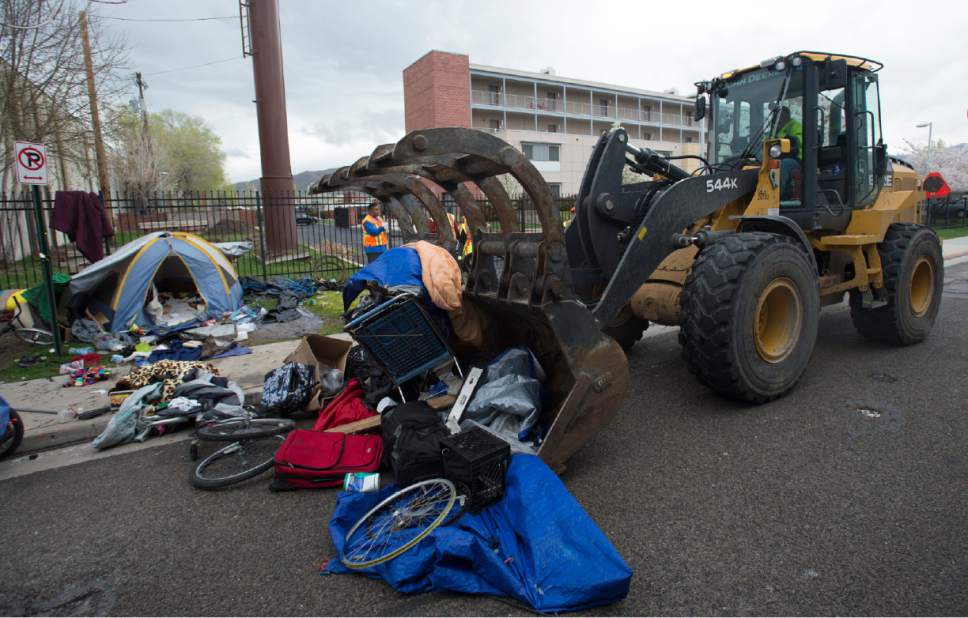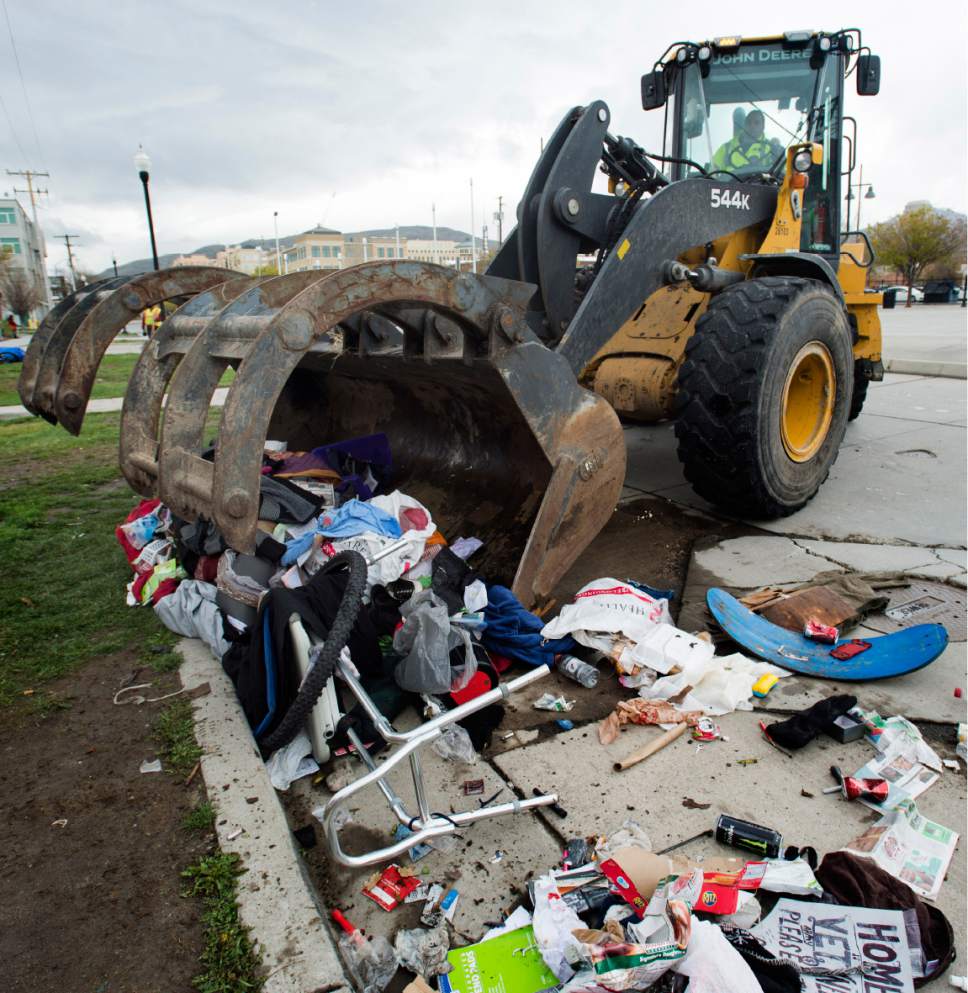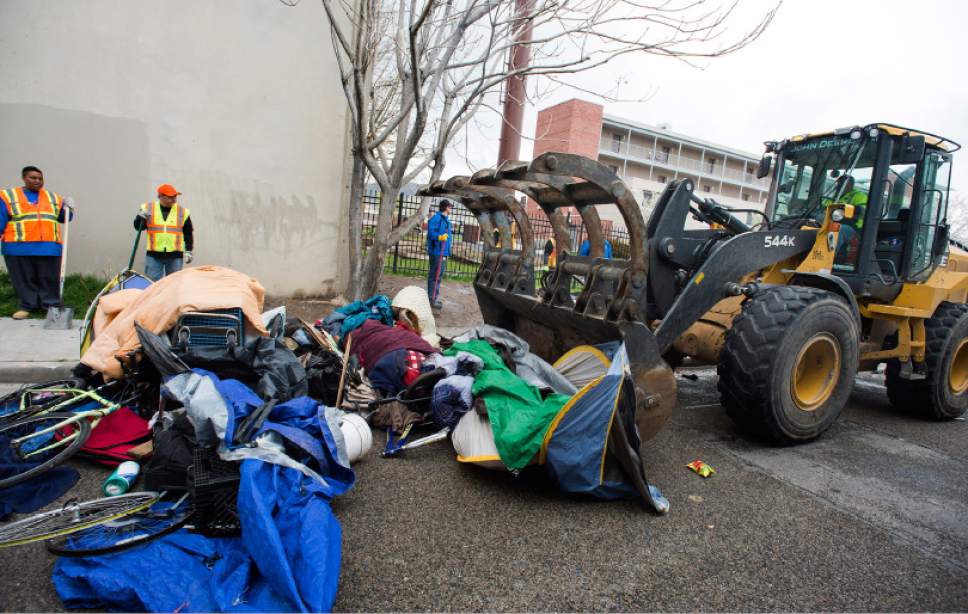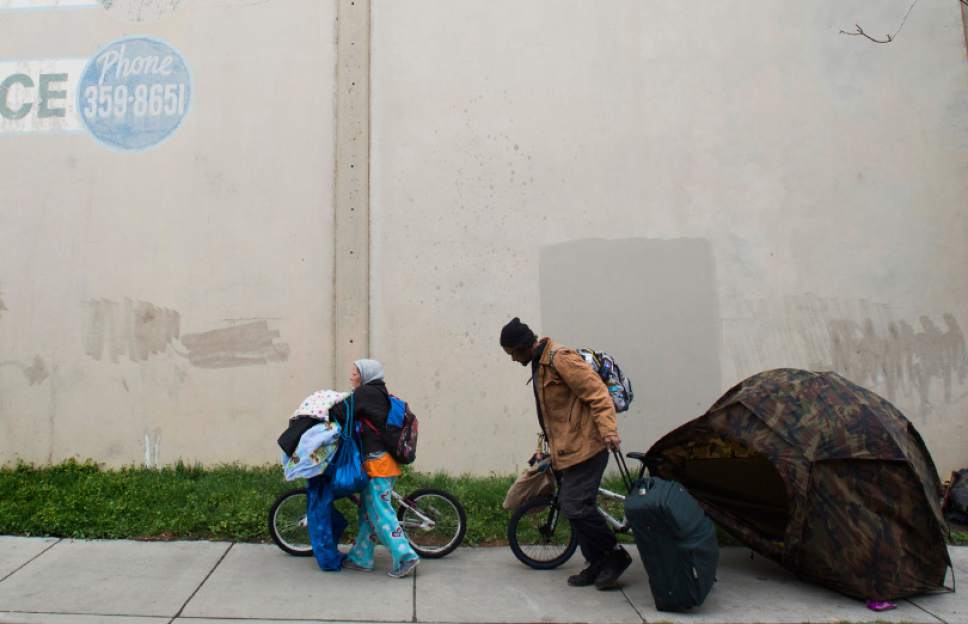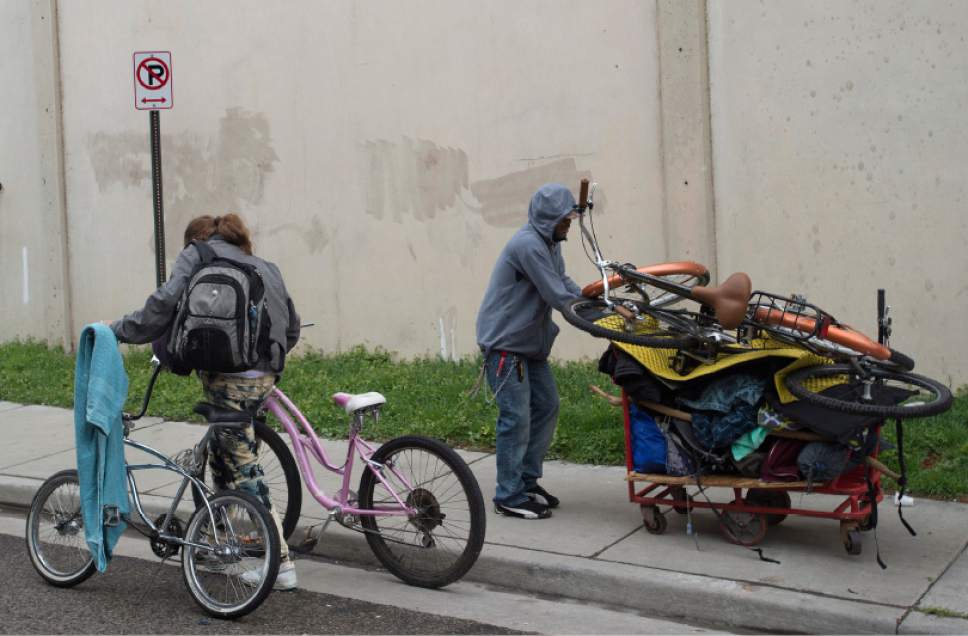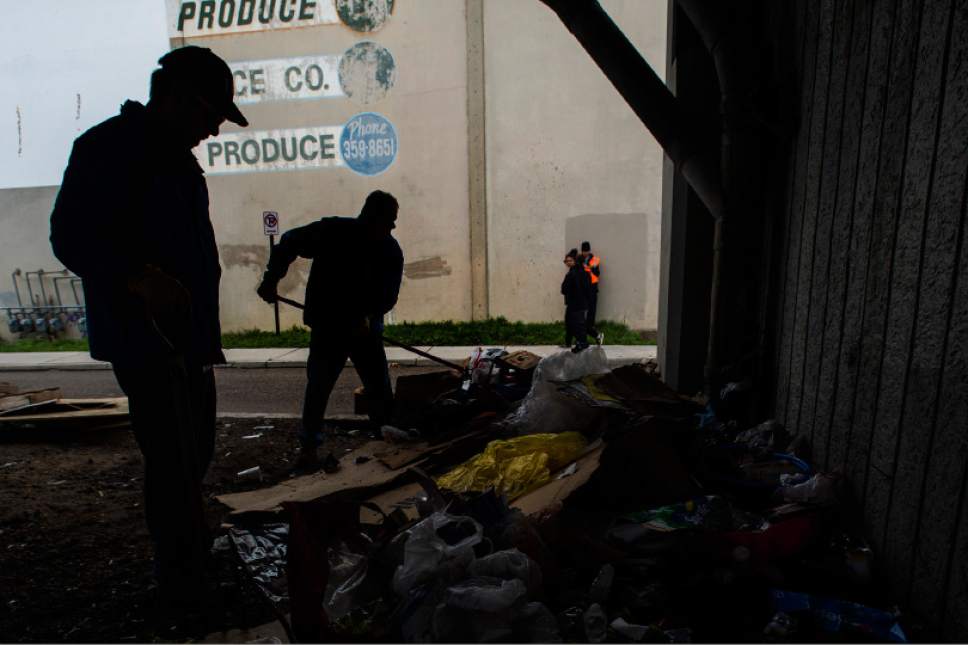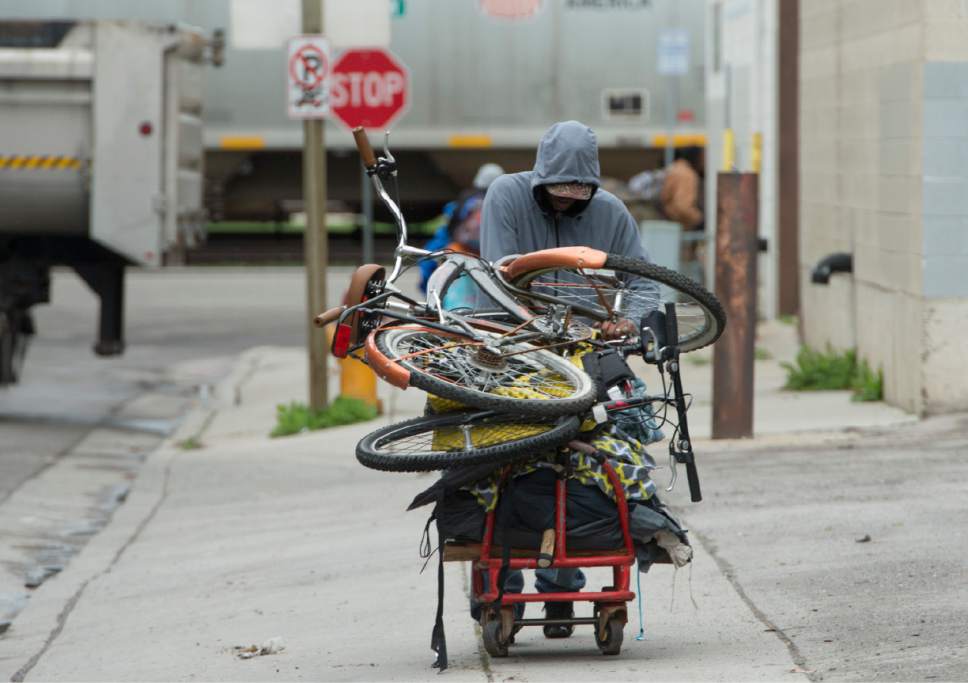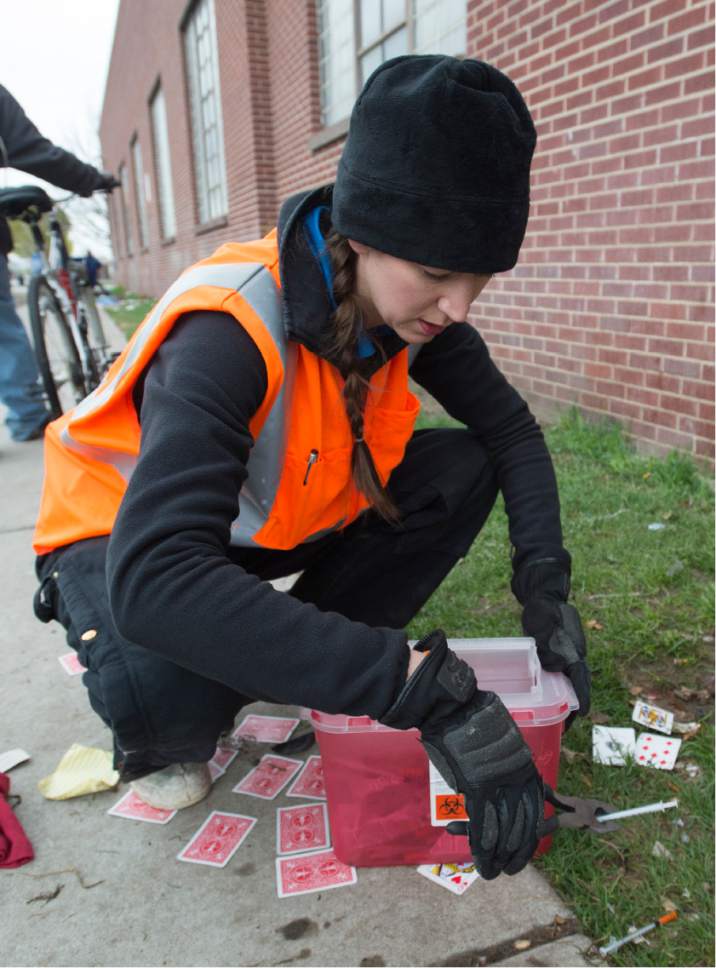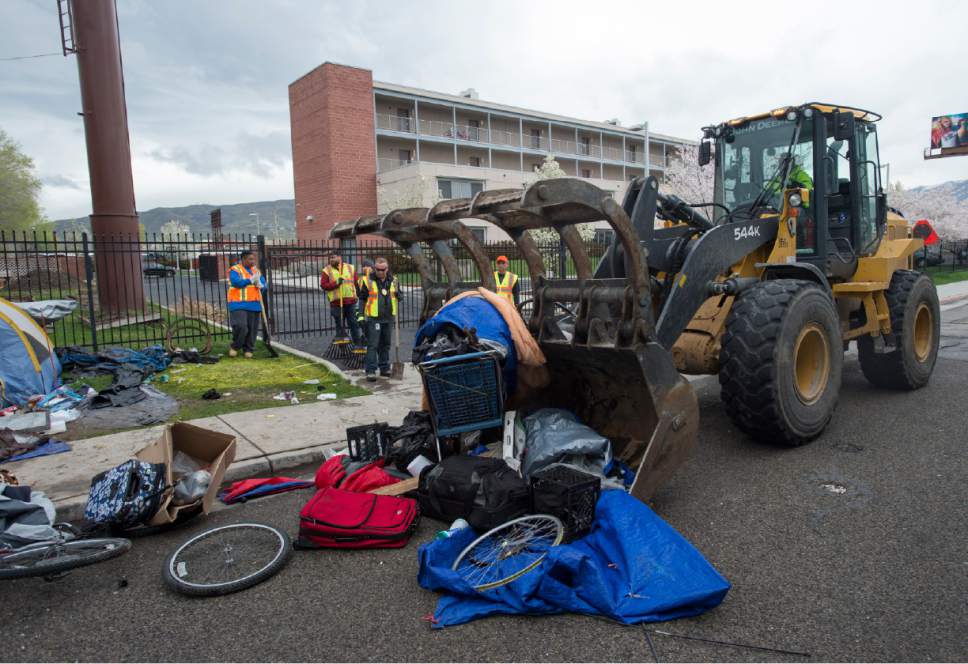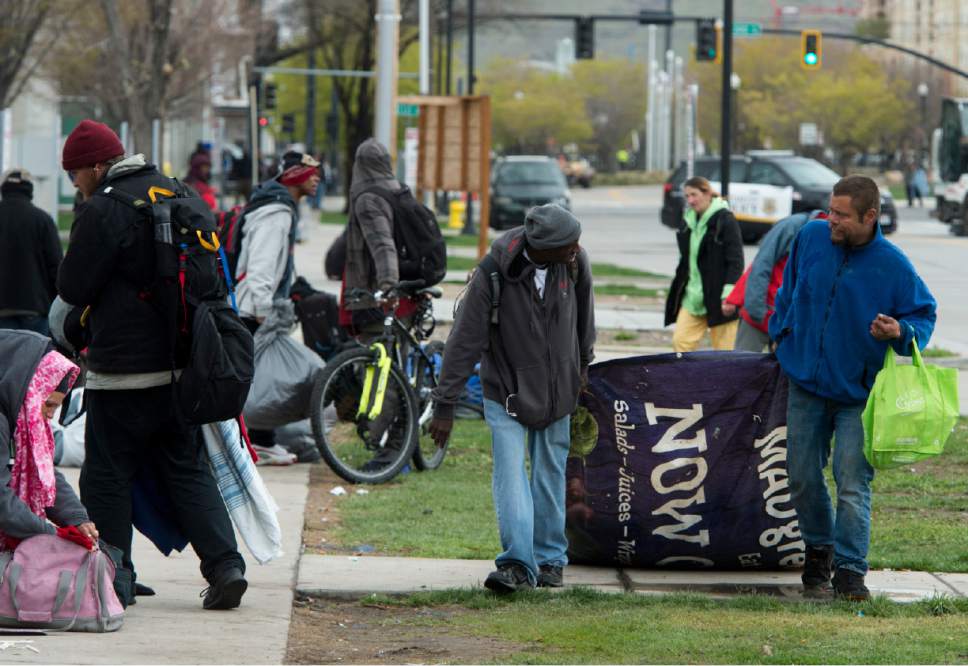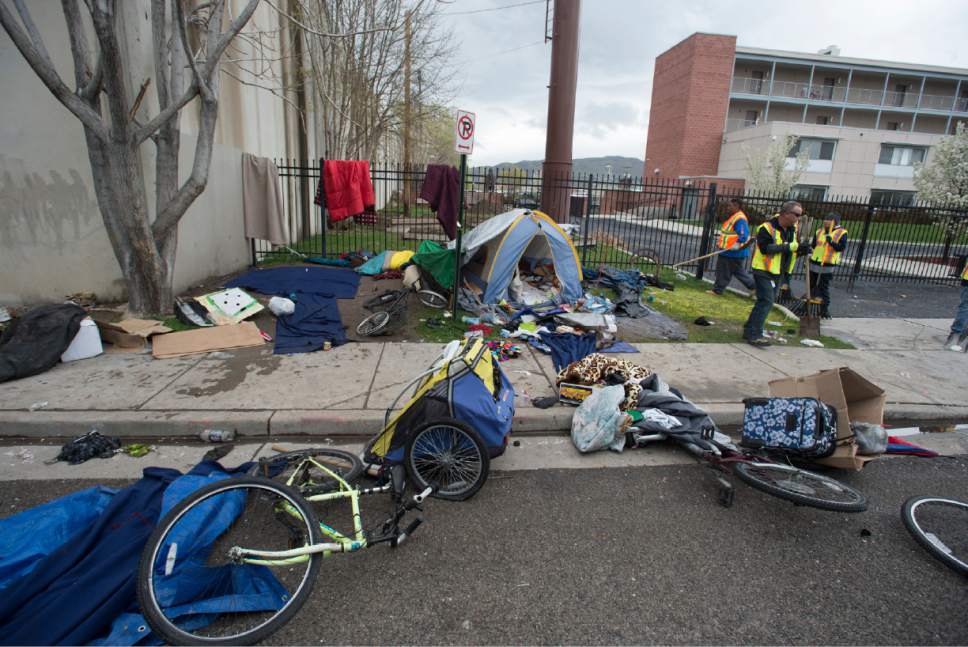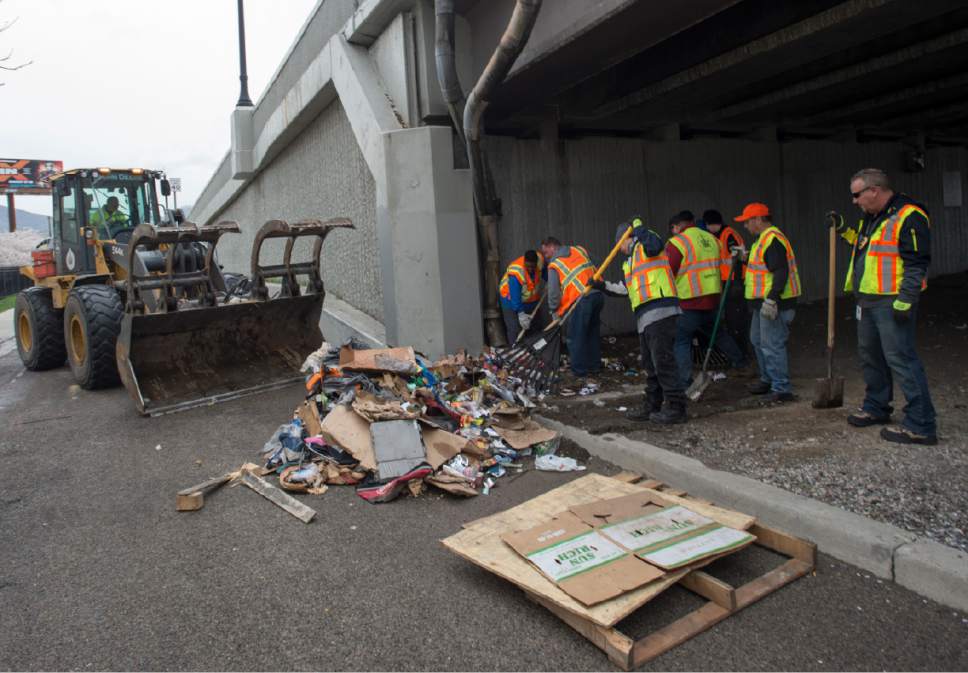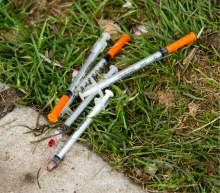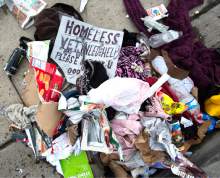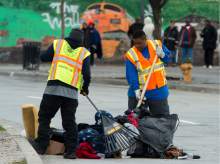Rick Egan | The Salt Lake Tribune
Workers from the Salt Lake County Health Department and Salt Lake City Waste and Recycling Div
Rick Egan | The Salt Lake Tribune
Heavy equipment is used to clean up trash on 500 West, as workers from the Salt Lake County H
Rick Egan | The Salt Lake Tribune
Heavy equipment is used to move blankets, tents and bicycles on 600 South, as workers from th
Rick Egan | The Salt Lake Tribune
People camping on public property move the belongings, as workers from the Salt Lake County He
Rick Egan | The Salt Lake Tribune
People camping on public property move the belongings, as workers from the Salt Lake County H
Rick Egan | The Salt Lake Tribune
Workers from the Salt Lake County Health Department and Salt Lake City Waste and Recycling Di
Rick Egan | The Salt Lake Tribune
People camping on public property move their belongings, as workers from the Salt Lake County
Rick Egan | The Salt Lake Tribune
Karla Bartholomew collects needles left by homes people camping along 500 West, as workers fr
Rick Egan | The Salt Lake Tribune
More than 100 needles were found among the debris, as workers from the Salt Lake County Healt
Rick Egan | The Salt Lake Tribune
Heavy equipment is used to move blankets, tents and bicycles on 600 South, as workers from th
Rick Egan | The Salt Lake Tribune
More than 100 needles were found among the debris, as workers from the Salt Lake County Health
Rick Egan | The Salt Lake Tribune
People camping on public property move their belongings, as workers from the Salt Lake County
Rick Egan | The Salt Lake Tribune
Workers from the Salt Lake County Health Department and Salt Lake City Waste and Recycling Di
Rick Egan | The Salt Lake Tribune
Workers from the Salt Lake County Health Department and Salt Lake City Waste and Recycling Di
Rick Egan | The Salt Lake Tribune
Heavy equipment is used to move trash on 600 South, as workers from the Salt Lake County Heal
Rick Egan | The Salt Lake Tribune
Workers from the Salt Lake County Health Department and Salt Lake City Waste and Recycling Division, clean up campsites along 600 South on Friday.
Rick Egan | The Salt Lake Tribune
Heavy equipment is used to clean up trash on 500 West, as workers from the Salt Lake County Health Department and Salt Lake City Waste and Recycling Division clean up campsites along the street. Friday, March 31, 2017.
Rick Egan | The Salt Lake Tribune
Heavy equipment is used to move blankets, tents and bicycles on 600 South, as workers from the Salt Lake County Health Department and Salt Lake City Waste and Recycling Division clean up campsites along the street. Friday, March 31, 2017.
Rick Egan | The Salt Lake Tribune
People camping on public property move the belongings, as workers from the Salt Lake County Health Department and Salt Lake City Waste and Recycling Division clean up campsites along 600 South on Friday.
Rick Egan | The Salt Lake Tribune
People camping on public property move the belongings, as workers from the Salt Lake County Health Department and Salt Lake City Waste and Recycling Division clean up campsites along 600 south, Friday, March 31, 2017.
Rick Egan | The Salt Lake Tribune
Workers from the Salt Lake County Health Department and Salt Lake City Waste and Recycling Division clean up campsites under the over pass, along 600 south, Friday, March 31, 2017.
Rick Egan | The Salt Lake Tribune
People camping on public property move their belongings, as workers from the Salt Lake County Health Department and Salt Lake City Waste and Recycling Division clean up campsites along 600 south, Friday, March 31, 2017.
Rick Egan | The Salt Lake Tribune
Karla Bartholomew collects needles left by homes people camping along 500 West, as workers from the Salt Lake County Health Department and Salt Lake City Waste and Recycling Division clean up the area. More than 100 needles were found among the debris. Friday, March 31, 2017.
Rick Egan | The Salt Lake Tribune
More than 100 needles were found among the debris, as workers from the Salt Lake County Health Department and Salt Lake City Waste and Recycling Division clean up the area. Friday, March 31, 2017.
Rick Egan | The Salt Lake Tribune
Heavy equipment is used to move blankets, tents and bicycles on 600 South, as workers from the Salt Lake County Health Department and Salt Lake City Waste and Recycling Division clean up campsites along the street. Friday, March 31, 2017.
Rick Egan | The Salt Lake Tribune
More than 100 needles were found among the debris, as workers from the Salt Lake County Health Department and Salt Lake City Waste and Recycling Division clean up the area on Friday.
Rick Egan | The Salt Lake Tribune
People camping on public property move their belongings, as workers from the Salt Lake County Health Department and Salt Lake City Waste and Recycling Division clean up remnants of the camps on 500 West, Friday, March 31, 2017.
Rick Egan | The Salt Lake Tribune
Workers from the Salt Lake County Health Department and Salt Lake City Waste and Recycling Division clean up campsites along the street. Friday, March 31, 2017.
Rick Egan | The Salt Lake Tribune
Workers from the Salt Lake County Health Department and Salt Lake City Waste and Recycling Division, clean up campsites along 600 South, Friday, March 31, 2017.
Rick Egan | The Salt Lake Tribune
Heavy equipment is used to move trash on 600 South, as workers from the Salt Lake County Health Department and Salt Lake City Waste and Recycling Division clean up campsites along the street. Friday, March 31, 2017.


